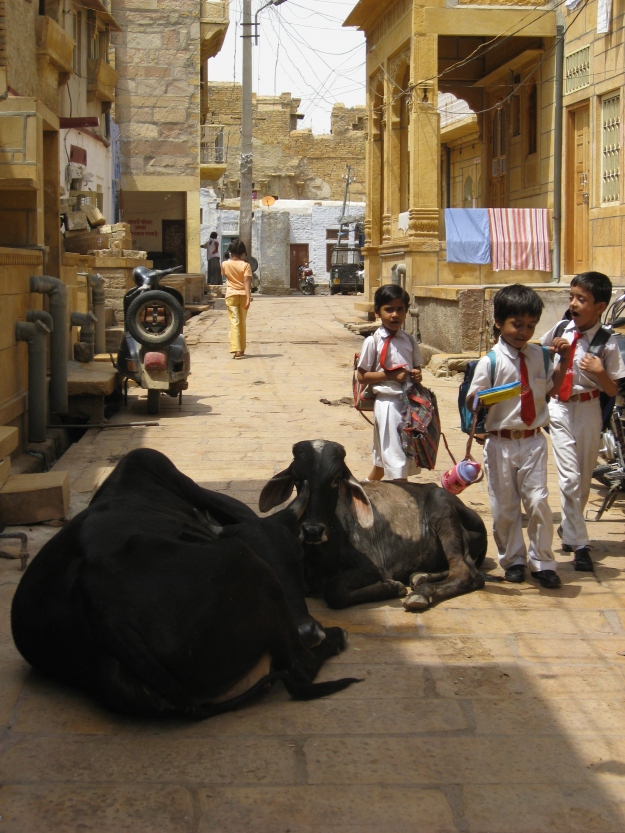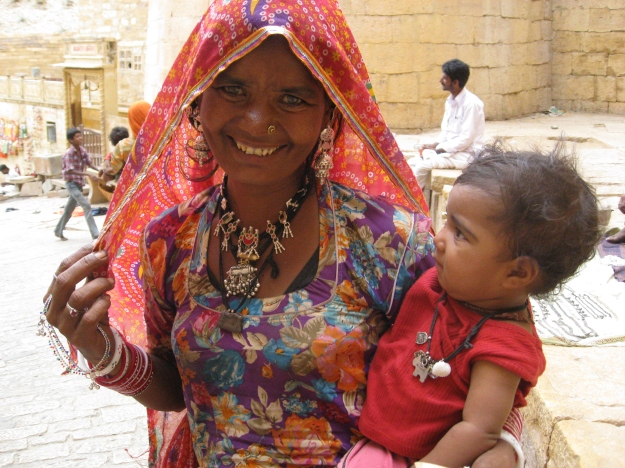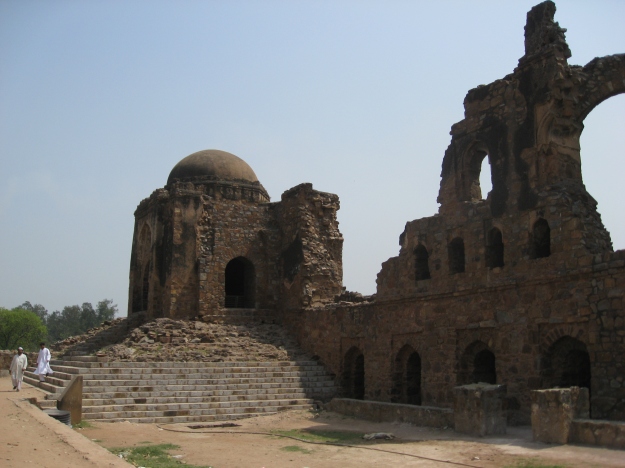During our last visit to Bombay our friends suggested to have Gujarati thali for lunch and mentioned a restaurant name Golden Star. It did not take very long to convince us –another regional thali, another culinary experience. Sounds good to us!
There are two Golden Star restaurants in Bombay, and we visited the one near Air India office. The restaurant seemed very popular, full of locals, and we were lucky to get a table after a few minutes’ waiting. We learnt that people are fond of this simple but cosy restaurant for good reasons: there is a specialty every day and the meals are unlimited. “We serve as long as you can eat” is written on Golden Star’s business card…  Our friend ordered for us and we started to be showered by different thalis of outstanding variety, served by proud young boys. Everything looked amazing and we could not wait to take the first bite. The waiters kept returning to our table to bring more food, and it was a pleasure to watch them. The manager came to talk to us, too, explaining that most dishes are from Gujarat, but some one would find in Rajasthan, too.
Our friend ordered for us and we started to be showered by different thalis of outstanding variety, served by proud young boys. Everything looked amazing and we could not wait to take the first bite. The waiters kept returning to our table to bring more food, and it was a pleasure to watch them. The manager came to talk to us, too, explaining that most dishes are from Gujarat, but some one would find in Rajasthan, too.
Eventually our plate (or should I say table) was full and our friend begun explaining what we were about to eat. A crash course to Indian food’s richness was about to start: dal bati (wheat rolls and lentils), kachori chaat (friend dumplings mixed with yogurt and chutney), spinach and corn curry, rajma (lentils and vegetables curry), shaak (Gujarati name for potato brinjal curry), and cauliflower and pea curry. To add more complexity to the meal, we tasted every single chutney and pickle from coriander, tamarind and garlic chutney to mango pickle. Amazing and so tasty.
To add more complexity to the meal, we tasted every single chutney and pickle from coriander, tamarind and garlic chutney to mango pickle. Amazing and so tasty.  But this was not all; then there were the breads! Bajra rotta (pearl millet flour), deep fried puri, papad, papadi and thin rotli with ghee. Each bread had its purpose, and had to be eaten with a specific dish. The magic of Indian kitchen.
But this was not all; then there were the breads! Bajra rotta (pearl millet flour), deep fried puri, papad, papadi and thin rotli with ghee. Each bread had its purpose, and had to be eaten with a specific dish. The magic of Indian kitchen.
Oh, and then there was also the famous mango aam ras puree! The waiters kept serving us more and more, and we did not decline the offer… The meal included sweets (that were served at the same time in the beginning) but this is where my notes and memory get a bit blurry… We did have orange dholkla (steamed dumpling), batata vada (fried potato dumpling), sweet malpua (wheat-flour fritter fried in ghee and dipped in safron, sugar and syrup), but this is all I remember.
The meal included sweets (that were served at the same time in the beginning) but this is where my notes and memory get a bit blurry… We did have orange dholkla (steamed dumpling), batata vada (fried potato dumpling), sweet malpua (wheat-flour fritter fried in ghee and dipped in safron, sugar and syrup), but this is all I remember.
I am sure I am forgetting half of the dishes we ate, and I am not in a position to explain how you should eat your Gujarati thali, but I do know that the waiters at Golden Star are very friendly! So, do exit your comfort zone of butter chicken and palak paneer, and experience a Gurajati thali. You won’t be disappointed!
Note: Gujarati food is often vegetarian (many Jains live in that region) and a mixture of sweet, salty and spicy. The cuisine is known to be on the sweeter side (at least sweeter than other regional cuisines of India), but we did not really see any difference. I am not a big fan of sugar in general and I loved the food.
























